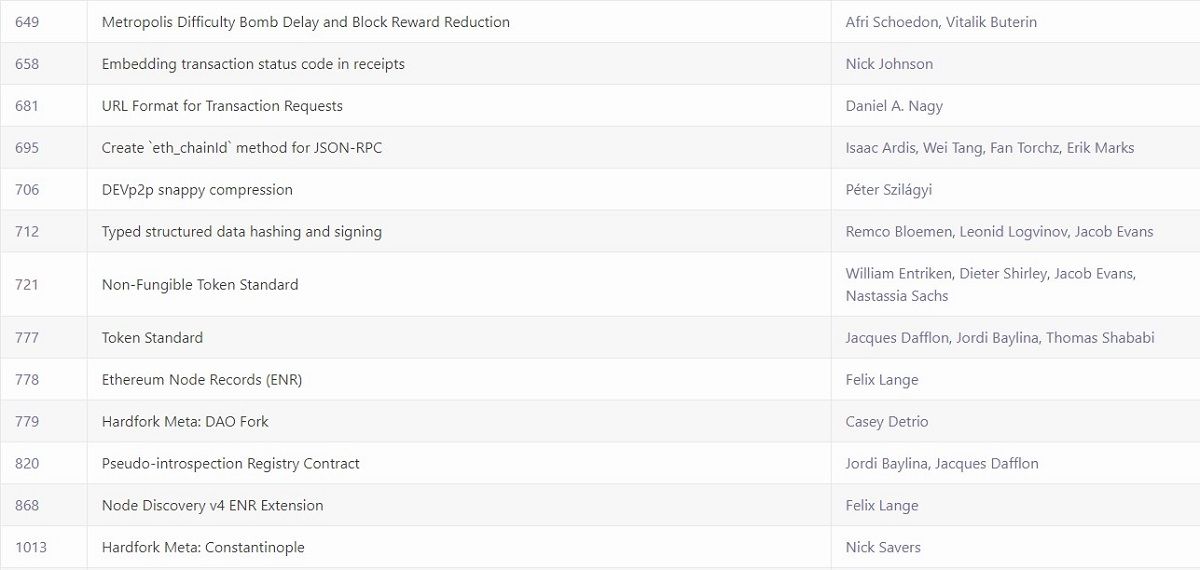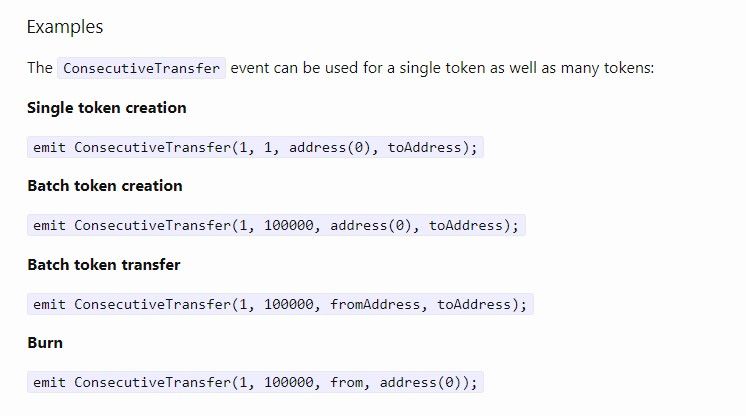No NFTs are created equal. In fact, they're not all created in the same way. The Ethereum Foundation has a number of different NFT standards that allow users to create different kinds of NFTs that behave differently or have different utilities. Here, we'll look at a few of the NFT-centric ERCs and EIPs you should know about.
Understanding Ethereum Standards
Before we dive into the different Ethereum standards for NFTs, let's quickly consider how Ethereum standards come to be.
While we know that Vitalik Buterin is the creator and "leader" of Ethereum, he still can't make unilateral decisions. Instead, there's a huge network of developers that work together to make changes to how the Ethereum blockchain works. They make these changes through Ethereum Improvement Proposals.
Ideas for new standards start out as "Ethereum Requests for Comment" or "ERCs." These go through a (usually) long and arduous public review, comment, and revision process. The vast majority are never accepted and never become a part of the Ethereum network.
The number designation for ERCs and EIPs is given in the order they are proposed rather than the order they're accepted. For example, there's an ERC-601, but you'd have to look pretty hard to find ERC-602—because it never became a functioning Ethereum standard.
Some Ethereum standards are for tokens (fungible and otherwise), and others are for contracts, interfaces, and other elements of the Ethereum network.
The Dawn of Modern NFTs and Smart Contracts
ERC-20 created ETH as we know it today, including the ability of the token to work in smart contracts. NFTs technically worked on ERC-20, and the earliest NFTs were minted on ERC-20 before dedicated NFT standards arose. But, ERC-20 didn't optimize for NFTs. ERC-721 did.
Specifically, working with one NFT at a time worked with ERC-20, but the more you added, the messier it got. After all, ERC-20 was meant for currency which is, by nature, fungible. By 2018 when ERC-721 was finalized, it was already clear that non-fungible tokens would need to be manageable at a scale that wasn't feasible with the ERC-20 standard.
Of course, because most NFTs are purchased with "basic" tokens, and NFTs and basic tokens were different standards, the need arose for "a standards standard." ERC-1155 opened the door to smart contracts involving both ERC-20 and ERC-721.
Standards for Creators and Artists
As NFTs gained popularity, particularly in the art scene, it became increasingly common to see people creating and transferring NFTs at scale. ERC-2309 made the paperwork simpler by allowing concurrent or consecutive NFTs in a contract to have consecutive token identifiers.
ERC-2981 is the standard that allows the minter of an NFT to extract royalties from resale, regardless of the platform (or platforms) on which the sale or resale occurs.
Ethereum Standards Expand the Uses for NFTs
You've heard of fungible tokens. You've heard of non-fungible tokens. Have you heard of "semi-fungible tokens?" ERC-3525 allows for the creation of tokens that have different identifiers (non-fungible) but the same value (fungible). That might sound like an ERC-20 token, but again, this EIP solves a specific problem.
Membership in a Decentralized Autonomous Organization is a prime example. DAOs work like publicly traded companies. Individuals pay for membership and, by proving that they have membership (in this case through ownership of special cryptocurrency tokens), make decisions on how the organization functions.
The tokens used to secure membership, claim voter rights, and have other utilities within a DAO can't all be the same, but they must all have the same value. This allows them to be identifiable, but it also allows them to be transferable. That's what ERC-3525 does.
But suppose that you want a token only to be usable once? Like a ticket that allows the user a certain utility and then disappears? There's an EIP for that. ERC-4400 allows ERC-721 tokens to be modified to be "consumed" when an owner cashes it in for some promised boon. Similarly, ERC-4907 allows a person to "rent" NFTs for a predetermined timeframe.
ERC-4906 is also to do with NFTs, but it's comparatively boring. The standard just made it easier to track edits to an NFT's metadata.
More NFT Standards Means Better Functioning NFTs
Most people who own most NFTs probably could have stopped reading at ERC-721. However, for those looking to mint and use NFTs in innovative ways and those who still think that the most exciting NFT utility is still to come, new Ethereum NFT standards are crucial.



